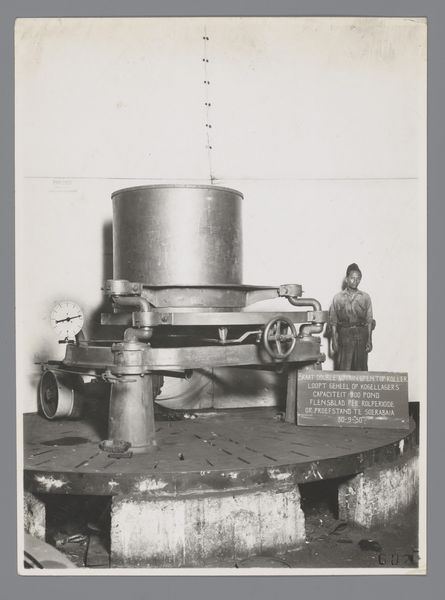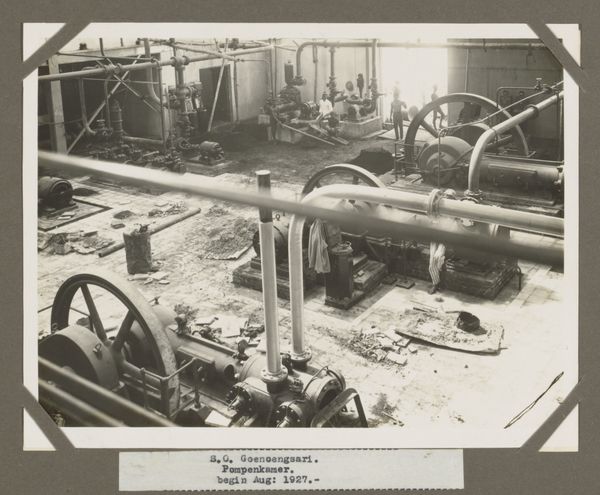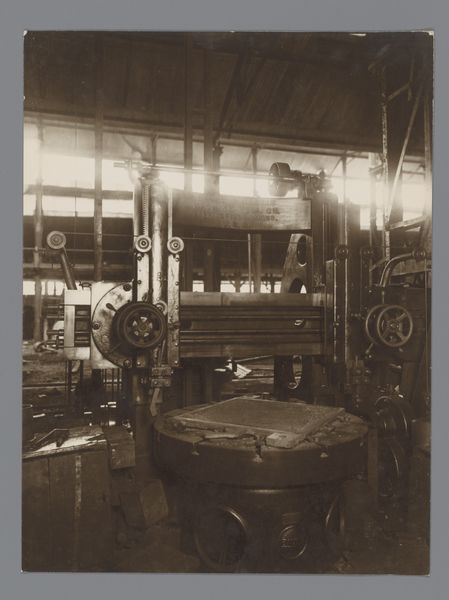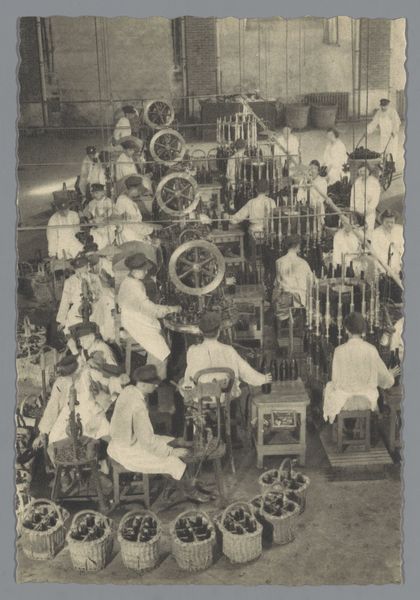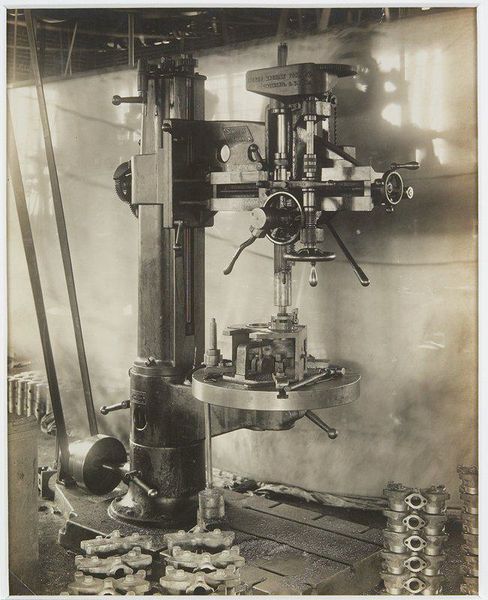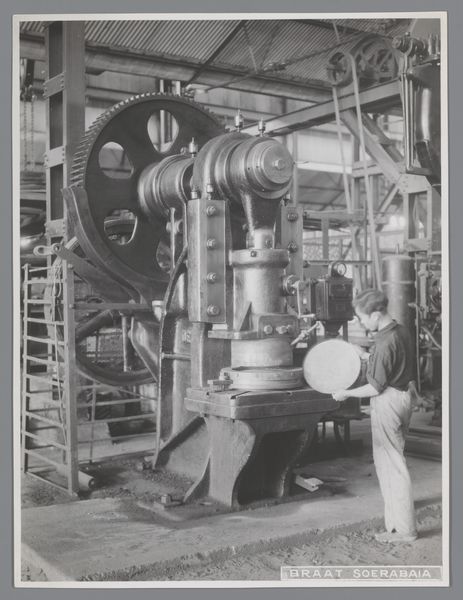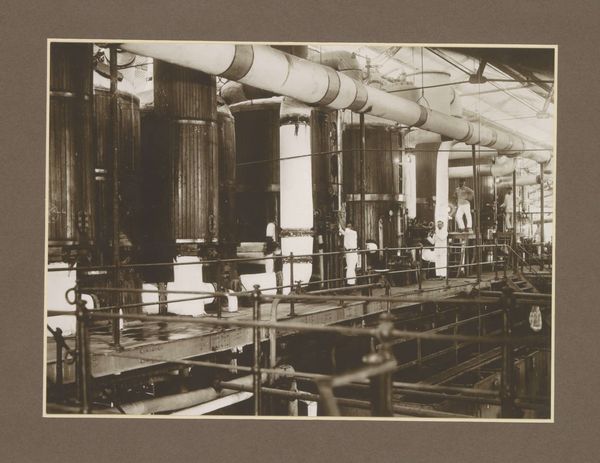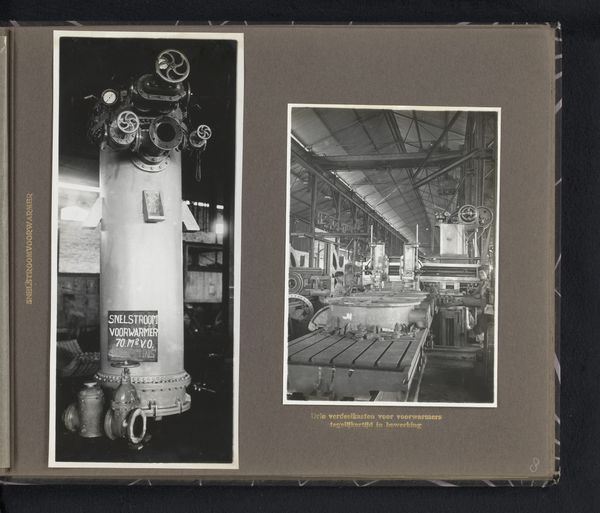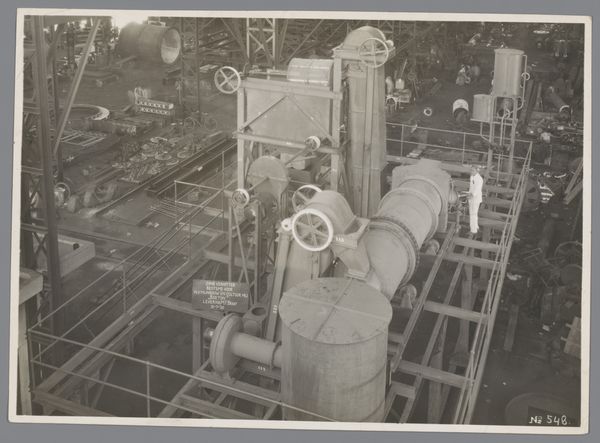
photography, gelatin-silver-print
#
landscape
#
photography
#
gelatin-silver-print
#
cityscape
#
realism
Dimensions: height 86 mm, width 56 mm
Copyright: Rijks Museum: Open Domain
Curator: Looking at this gelatin silver print from 1912, entitled "Workers at a pile driver during construction work in Brussels, Belgium" by Wesseling, I'm struck by the sheer industry captured. It really grounds you in a specific time. Editor: My first thought is the powerful contrast. It's somber but with hints of transformation, you can see labor immortalized in stark monochrome. It seems less like documenting work and more about memorializing an era and the role of people in changing cities. Curator: It’s intriguing how the city itself becomes this backdrop—almost an archetypal landscape of early 20th-century urban development. The visual language here really plays with motifs of industry and collective identity, not only as an art form but a sign of continuity. The symbols here of the hoist and building could tell you more than most history books. Editor: I am intrigued to consider these figures, performing labor, potentially altering urban life. What kind of access and privileges are afforded through progress, and who is it benefitting the most? The starkness of the print only underscores that these are individuals shaping spaces in the city, while also bound to systems and a new kind of modernity that might marginalize them. It provokes reflection of the cost of modern societies. Curator: That reading layers so much resonance onto what could be seen simply as an industrial landscape. When we peel back that layer to consider urban narratives of those less powerful and more about continuity of hard work as a virtue and value that are built into the fabric of cities it carries real meaning across time and cultures. It becomes an interesting icon of resilience. Editor: Precisely. Seeing the work gives me an important way to reconsider histories as well as prompt conversations regarding class and identity. Curator: I find it powerful how such a still and silent photograph, from over a century ago, keeps resonating and offering new reflections as we navigate current shifts in labor and development. Editor: It is that capacity of art – its stubborn way of staying relevant while simultaneously transforming meanings – that draws me back, every time.
Comments
No comments
Be the first to comment and join the conversation on the ultimate creative platform.
